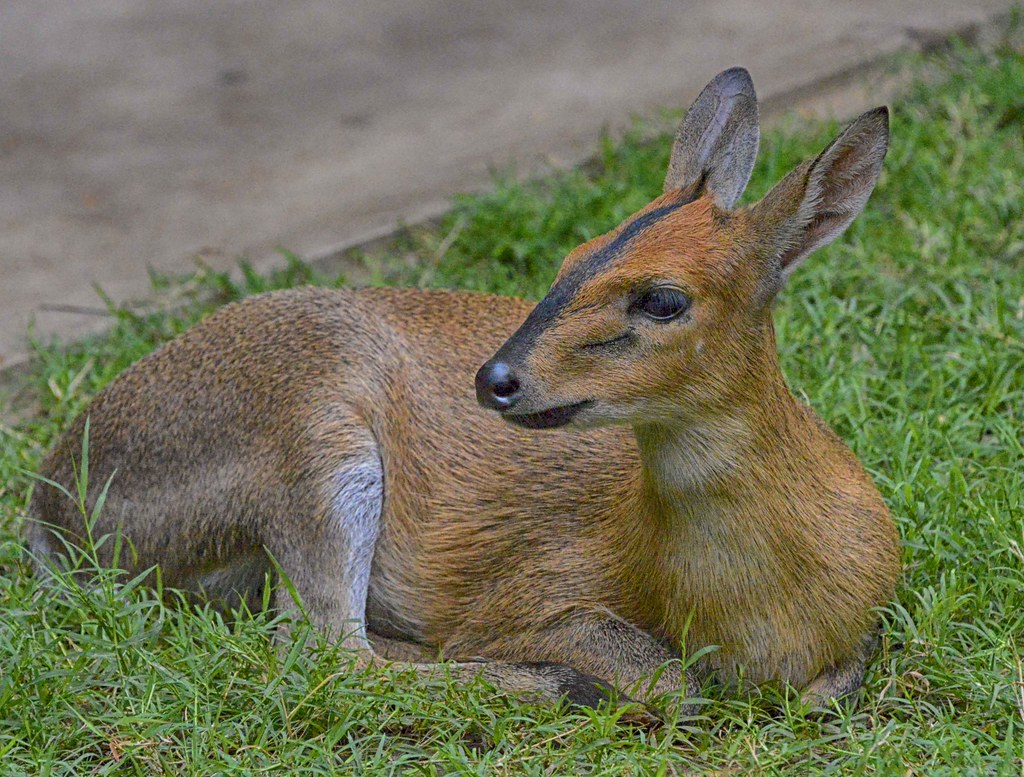– Introduction to dik-diks: Understanding their behavior and habitat
– The role of dik-diks in ecosystems and their interactions with other species
– Threats to dik-dik populations and conservation efforts
– Zoological management of dik-diks: Challenges and strategies in captivity
– Initiatives for the future: Research and community involvement in dik dik conservation
Dik disks, small antelopes found primarily in Eastern and Southern Africa, offer an intriguing study in adaptive behavior and ecological significance. These diminutive creatures, standing only about 30-40 cm tall at the shoulder, have evolved unique survival strategies, allowing them to thrive in their semi-arid habitats. Understanding these strategies sheds light on the fascinating world of dik-diks and underscores the broader importance of conservation efforts for maintaining biodiversity.
One of the cornerstone behaviors of dik-diks is their monogamous pairing, a rarity among antelopes. This bonding is crucial to their survival, with pairs establishing territories they fiercely defend against intruders. Their territorial behavior is complemented by an intimate knowledge of their local environment—utilizing hiding spots and relying on a complex communication system that includes visual signals and vocalizations to alert each other to danger. Investigating these behaviors provides insights into how dik-diks successfully navigate their environment and maintain their population dynamics.
Dik disks are vital in their ecosystems, serving as a key food source for predators, including leopards, cheetahs, and hyenas. Their grazing habits also contribute to the dispersal of plant seeds, aiding in the regeneration of their habitats. The interaction between dik-diks and their environment exemplifies the intricate balance of ecosystems, demonstrating how the survival of a seemingly modest species can have wide-reaching implications for ecological health.
Despite their adaptability, dik dik populations face significant threats from habitat destruction caused by agricultural expansion, climate change, and poaching. The loss of habitat reduces the available territories for dik-diks and exerts pressure on the delicate ecosystems they inhabit. Poaching, while less common for dik-diks than for larger species, still poses a risk, primarily for their hides. Addressing these threats requires a multifaceted approach to conservation, combining legal protection, habitat restoration, and community engagement to ensure the survival of dik-diks and their ecosystems.
In zoo management, dik-diks present unique challenges and opportunities for conservation education. Captive breeding programs have proven successful for some dik dik species, contributing valuable genetic diversity and serving as an educational tool to raise awareness about their conservation. However, replicating the natural environment and social structure of dik-diks in captivity is essential for their well-being and requires careful habitat management and social dynamics. Zoos play a crucial role in fostering a connection between the public and wildlife conservation efforts, with dik-diks serving as ambassadors for their wild counterparts.
Looking ahead, the future of dik-dik conservation rests on a combination of scientific research, community involvement, and global cooperation. Research initiatives focusing on dik dik behavioral ecology, genetics, and habitat requirements are vital for informing conservation strategies. Engaging communities near dik-dik habitats emphasizes the shared responsibility for wildlife conservation and promotes sustainable coexistence. International collaboration on wildlife protection policies and funding for conservation projects can amplify these efforts, ensuring a bright future for dik-diks and the ecosystems they inhabit.
Dik diks represent a remarkable example of evolutionary adaptation and ecological importance. Their survival is intricately linked with the health of their environments, highlighting the need for informed conservation strategies that address the direct and indirect threats they face. Through in-depth research, innovative zoo management practices, and global conservation initiatives, it is possible to secure a sustainable future for dik-diks, their ecosystems, and the planet.


